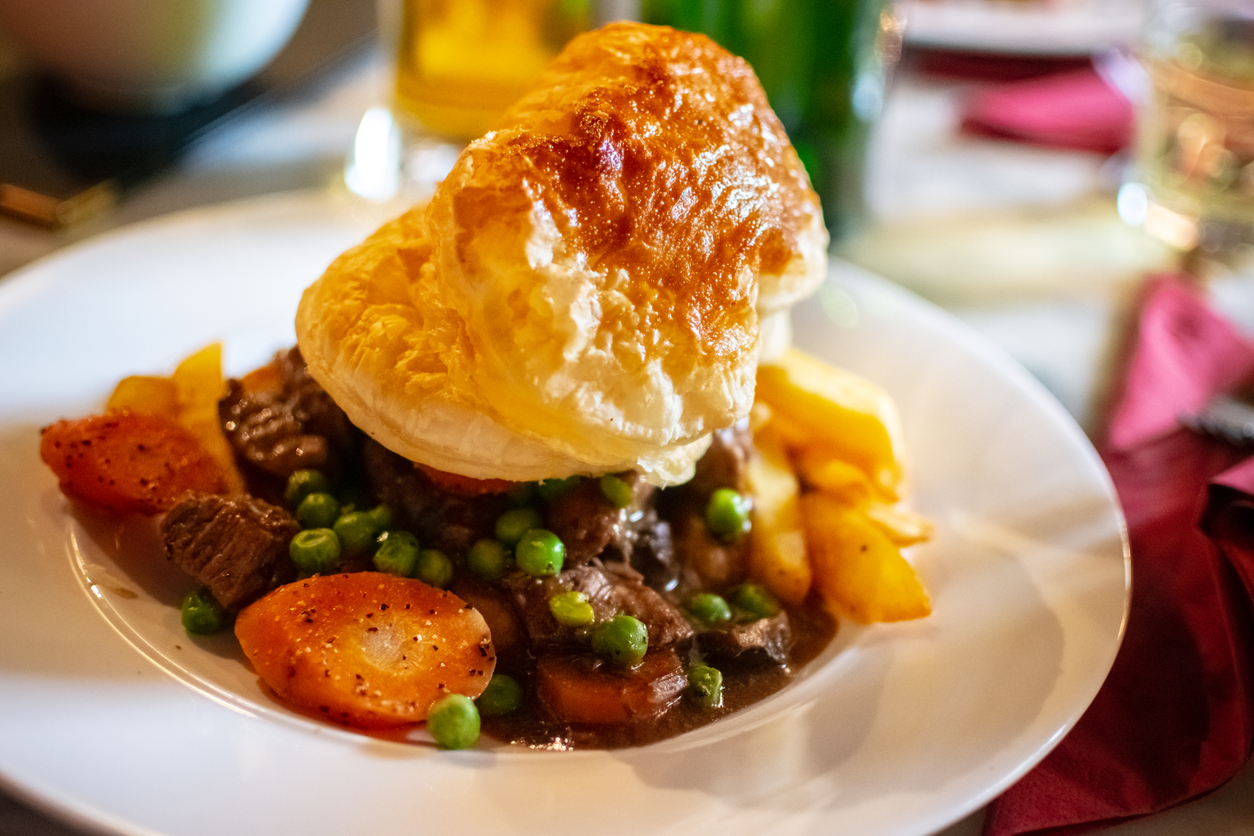
As the clock strikes midnight and the New Year unfolds, Scotland embraces traditions rich in warmth and heritage. Among these, the Steak Pie reigns supreme, a culinary emblem woven deeply into the heart of Scottish New Year’s celebrations. More than just a dish, it’s a symbol of conviviality and history, a gastronomic delight savoured on New Year’s Day that captures the essence of the overall culture. But what is it about Steak Pie that elevates it from a mere menu item to an integral part of welcoming another year in Scotland? This engaging journey will uncover the answer by delving into the layers of history, cultural significance, and contemporary charm that make the Steak Pie an indispensable part of New Year’s Day festivities, a dish as rich in flavour as it is in stories.
Historical Roots: From Humble Beginnings to Festive Feasts
Steak Pie’s journey through Scottish history is both fascinating and intricate, tracing its origins back to the medieval period when pies were not just a culinary choice but a necessity. In these times, pies acted as a practical method for preserving meat in the absence of modern refrigeration techniques. The crust, often hard and inedible, served as a protective casing, keeping the meat inside fresh and edible for longer periods.
But the significance of these pies transcended their practical use. They were also a symbol of festivity and communal celebration. In a time when food was a central part of any gathering, pies – with their generous fillings and hearty nature – became synonymous with feasting and merry-making. Over the centuries, as culinary practices evolved, so did the Steak Pie. The Renaissance period brought a surge in the use of spices, which found their way into these pies, adding depth and complexity to their flavours. Simultaneously, advancements in pastry-making began to transform the pie crust from merely a protective shell to an enjoyable part of the dish. The crust became flakier, more buttery, and edible, complementing the rich, savoury filling inside.
Cultural Significance: The Steak Pie as a New Year’s Day Staple
In the heart of Scottish culture, the tradition of serving Steak Pie on New Year’s Day is steeped in symbolism and festivity. It’s a dish that carries with it hopes of prosperity and good fortune. The rich, savoury meat and the hearty, fulfilling nature of the pie are seen as harbingers of abundance and wealth in the coming year. This belief intertwines with the dish, making it much more than a meal; it’s a ritual of sorts, a culinary good-luck charm for the future.
The significance of Steak Pie becomes even more pronounced during Hogmanay, the Scottish term for New Year’s celebrations. In these festivities, Steak Pie is not just food; it’s a focal point of the communal dining experience. Families and friends gather around tables laden with this sumptuous dish, revelling in the spirit of togetherness and joy. It transcends being a mere part of the menu to become a symbol of unity and celebration, embodying the essence of Hogmanay. In this context, Steak Pie serves as a reminder of the bonds that hold communities together and the joyous spirit that permeates Scottish New Year’s celebrations.
The Culinary Art: Understanding the Craft of Steak Pie Making
The heart and soul of an authentic Scottish Steak Pie lie in its carefully selected ingredients and the mastery of its pastry. The foundation of this iconic dish is high-quality, locally sourced beef, revered for its rich flavour and tender texture. Complementing the meat are fresh vegetables that add depth and a wholesome character to the pie. However, the pièce de résistance is the rich, thick gravy, a crucial component that marries the ingredients together, creating a harmony of flavours that is both robust and nuanced. The careful preparation of this gravy, balancing its thickness and seasoning, is essential in achieving the distinctive taste that Steak Pie aficionados cherish.
Equally important is the pastry, a component that transcends its role as a mere encasing. The pastry of a traditional Scottish Steak Pie is an art form in itself, requiring skill and precision to achieve that perfect flaky, golden crust. This crust is not just a container for the filling but an integral part of the culinary experience. Its texture and flavour are pivotal, providing a delightful contrast to the rich, savoury filling inside. The pastry’s buttery, crisp layers are the first thing one tastes, setting the stage for the following flavoursome journey. Achieving this level of pastry perfection is a testament to the skill and tradition embedded in Scottish baking, making the Steak Pie not just a dish but a celebration of culinary craftsmanship.
Final Thoughts
The Scottish Steak Pie is much more than a mere dish; it’s a rich tapestry woven into the fabric of Scotland’s New Year’s celebrations. From its medieval origins as a practical means of preserving meat to its evolution into a symbol of prosperity and communal joy during Hogmanay, the Steak Pie is a testament to the area’s culinary heritage and cultural pride. Its importance is anchored in the quality of its locally sourced ingredients, the artful balance of its rich, savoury gravy, and the craftsmanship of its flaky, golden pastry, each element playing a critical role in crafting this beloved dish.
As families across Scotland gather around their tables to share this hearty, flavorful pie, they do more than just satiate their appetites; they partake in a ritual that has been passed down through generations. They celebrate the bonds that unite them, the hope for a prosperous year, and their culinary traditions’ enduring legacy. This dish symbolizes Scotland’s heart and soul, an emblem of togetherness, and a bearer of good fortune, making it the perfect centrepiece for welcoming the New Year.